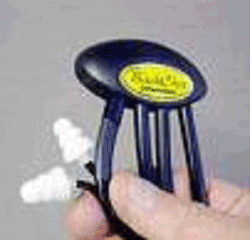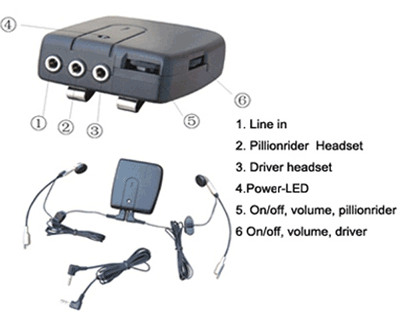Against the wind – Part 1: Motorcycle communications
Communicating on motorcycles has always been a challenge but technology has helped improve it dramatically
Paul O’Shea
Sr. Editor
Electronic Products Magazine
Part 2 ( http://tinyurl.com/btj2nsh)talks about an unexpected use from using Bluetooth on a motorcycle
Long ago, motorcyclists had to develop hand signals between drivers or between rider and passenger as a means of communication. The signals needed to be simple such as a closed fist or the use of different fingers, and could also be a tap on the back from the passenger – whatever worked for you. Some riders took it to the next level of technology and used hollow tubes that had rubber-tipped tubes, which inserted into your ear and connected to a mouthpiece tube from the other rider. The upside was its simplicity. The downside was road-noise at speeds beyond a stroll of say 45 mph. And of course you had to remember to untether the connection when finished riding.

Here’s an example of what tube-talk technology looks like.
Then technology surged forward and we had copper-wire connections that allowed riders to connect to audio cassette tapes with wires to both helmets and the cassette deck. For me, the year was 1978 and I drove a shaft-drive Yamaha XS1100 – it was the first cycle to give the well-established BMW shaft-drive any real competition. The wired helmets were a great help when we travelled 3,600-miles round trip on an adventure from Texas to New York, because it helped keep us from getting sleepy (a particularly bad event on two wheels). Some riders even added wired connections with Citizens Band (CB), Family Radio Service (FRS) and General Mobile Radio Service (GMRS) radio. The upside, you had access to music – either cassette or local radio stations. The downside, we still had to use hand signals to communicate and we had to weaken the structural integrity of the helmet by drilling a hole for the wired connections. When finished riding or taking break, those wires could get in your way, and sometimes you were reminded rather abruptly, that you needed to unplug your helmet. Today, these systems vary in price and complexity from simple to sophisticated. For example I recently had BMW give me a quote of $1,400 for just the wiring (they would have to remove the fairing), while simple connections will cost less than $100.

Example of sophisticated wired communication system for motorcycles
As is wont to happen, technology changed and improved with the advent of Bluetooth. This technology was invented in 1994 by engineers at Ericsson. Many of you already know, but it’s worth repeating the derivation of the word Bluetooth. It is from the 10th century Danish King Harald Blåtand – or Harold Bluetooth. He was instrumental in uniting warring factions in parts of what is now Norway, Sweden and Denmark – just as Bluetooth technology is designed to allow collaboration between different business sectors such as the computing, mobile phones and automotive industries. In 1998, a group of companies agreed to work together using Bluetooth technology as a way to connect their products. These companies formed the Bluetooth Special Interest Group (SIG), an organization devoted to maintaining the technology. This means that no single company owns Bluetooth technology, but that many members of the Bluetooth SIG work together to develop Bluetooth technology. A fundamental strength of Bluetooth wireless technology is the ability to simultaneously handle data and voice transmissions, which provide users with a variety of innovative solutions such as hands-free headsets for voice calls, printing and fax capabilities, and synchronization for PCs and mobile phones. Bluetooth technology operates in the unlicensed industrial, scientific and medical (ISM) band at 2.4 to 2.485 GHz, using a spread spectrum, frequency hopping, full-duplex signal at a nominal rate of 1,600 hops/s. The 2.4 GHz ISM band is available and unlicensed in most countries. Bluetooth technology’s adaptive frequency hopping (AFH) capability was designed to reduce interference between wireless technologies sharing the 2.4 GHz spectrum. AFH works within the spectrum to take advantage of the available frequency. This is done by the technology detecting other devices in the spectrum and avoiding the frequencies they are using. This adaptive hopping among 79 frequencies at 1 MHz intervals gives a high degree of interference immunity and allows for more efficient transmission within the spectrum. You may wonder why all this background – simply put, this technology enabled private communication for up to four riders – one pair at a time. Something that was not possible until this year when companies like Sena (www.senabluetooth.com) provided the capability.
■
Advertisement
Learn more about Electronic Products Magazine





